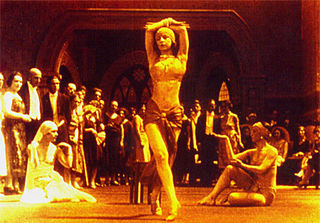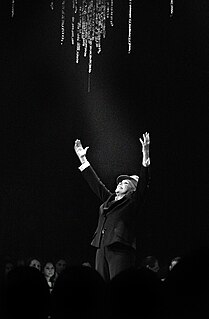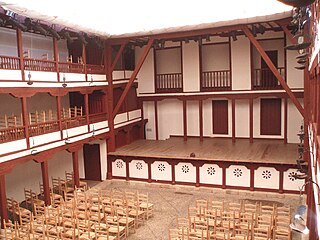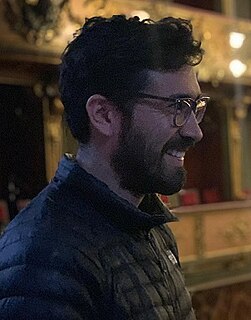
The National University of Colombia is a public and national research university in Colombia, with general campuses in Bogotá, Medellín, Manizales and Palmira, and satellite campuses in Leticia, San Andrés (island), Arauca, Tumaco and La Paz, Cesar. It was established in 1867 by an act of the Congress of Colombia, and it is one of the largest universities in the country, with more than 53,000 students. It grants many academic degrees and offers 450 academic programmes, including 95 undergraduate degrees, 83 academic specializations, 40 medical specialties, 167 master's degrees, and 65 doctorates. Approximately 44,000 students are enrolled for an undergraduate degree and 8,000 for a postgraduate degree. It is also one of the few universities that employs post-doctorate fellows in the country.

Cinema of Colombia refers to the film industry based in Colombia. Colombian cinema began in 1897 and has included silent films, animated films and internationally acclaimed films. Government support included an effort in the 1970s to develop the state-owned Cinematographic Development Company which helped produce some films yet struggled to maintain itself financially viable. FOCINE became defunct in 1993. In 1997 the Colombian congress approved Law 397 of Article 46 or the General Law of Culture with the purpose of supporting the development of the Colombian film industry by creating a film promotion mixed fund called Corporación PROIMAGENES en Movimiento. In 2003 Congress also approved the Law of Cinema which helped to restart the cinematographic industry in Colombia.

Fanny Elisa Mikey Orlanszky was an Argentine-born Colombian actress, theatre producer and entrepreneur. She lived and worked in Colombia from 1959 until her death and was the creator and organizer of the Bogotá Iberoamerican Theatre Festival, known as the biggest theatre festival in the world.
A loa is a short theatrical piece, a prologue, written to introduce plays of the Spanish Golden Age or Siglo de Oro during the 16th and 17th centuries. These plays included comedias and autos sacramentales. The main purposes for the loa included initially capturing the interest of the audience, pleading for their attention throughout the play, and setting the mood for the rest of the performance. This Spanish prologue is specifically characterized by praise and laudatory language for various people and places, often the royal court for example, to introduce the full-length play. The loa was also popular with Latin American or "New World" playwrights during the 17th and 18th centuries through Spanish colonization.

Colombian art has 3500 years of history and covers a wide range of media and styles ranging from Spanish Baroque devotional painting to Quimbaya gold craftwork to the "lyrical americanism" of painter Alejandro Obregón (1920–1992). Perhaps the most internationally acclaimed Colombian artist is painter and sculptor Fernando Botero (1932).

Osvaldo Dragún was a prominent Argentine playwright and the director of Cervantes Theater.
Carlos Barbosa Romero is a Colombian theatre and television actor, born 15 January 1944 in Bogotá.
Sonia Osorio de Saint-Malo was a Colombian ballet dancer and choreographer. During her long career she became an important folklorist and promoter of the arts and culture having worked closely with and for the Carnival of Barranquilla and having founded in 1960 the Colombia Ballet, a national ballet company that incorporates the native dances, styles and rhythms of Colombia.
The National Theatre Company of Mexico was established in 1977 in Mexico City to promote the theater arts on a national scale. The company was restructured in 2008 and had since been headed by director Luis de Tavira until 2017, when they chose Enrique Singer to take his place to direct the permanent cast of about forty members. The company promotes the theater tradition in general as well as Mexican playwriting and staging, performing classic and new works, as it performs nearly year round in various parts of the country.

Teatro Español is a public theater administered by the Government of Madrid, Spain. The prime location was an open-air theater in medieval times where small venues and some theatrical pieces, which formed famous classical literature in later years, were staged. Its establishment was authorized by a decree of Philip II in 1565.

Corral de comedias, literally a "theatrical courtyard", is a type of open-air theatre specific to Spain. In Spanish all secular plays were called comedias, which embraced three genres: tragedy, drama, and comedy itself. During the Spanish Golden Age, corrals became popular sites for theatrical presentations in the early 16th century when the theatre took on a special importance in the country. The performance was held in the afternoon and lasted two to three hours, there being no intermission, and few breaks. The entertainment was continuous, including complete shows with parts sung and danced. All spectators were placed according to their sex and social status.

Italian Colombians are Colombian citizens of Italian descent. The word may also refer to someone who has emigrated to Colombia from Italy. Most Italian Colombians live in Bogotá, Atlantico Department, Magdalena Department, Antioquia Department and Santander Department. Italians have been immigrating to Colombia since the early 16th century.

The Teatro Rojas is a theater in the city of Toledo. It was inaugurated in 1879 on the old corral de comedias called Mesón de la Fruta and in its construction participated several architects. It is denominated like this in honor of the Toledan playwright Francisco de Rojas.
Rosa de Eguílaz y Renart was a Spanish playwright and journalist. She was the daughter of playwright Luis de Eguílaz.

Gabriela Samper was a Colombian teacher, puppet theater creator and documentary filmmaker. The first woman to participate in documentary filmmaking, she is remembered for her ethnographic short films which explored the diversity of Colombian culture. Winning numerous awards, her work is part of the collection of the Latin American Film Archive at the MOMA in Manhattan.

Victor Quesada is a Colombian theatre director, playwright and writer.

Gastón Iungman is an Argentine musician, songwriter and musical producer, known for being one of the founders of the experimental rock group Duchamp Pilot. Iungman was also one of the creators of the theater and visual arts companies Puja! and Voalá, with which he has performed at important festivals and other events around the world. His most remarkable show is Muaré, a mixture of detailed aerial choreographies and rock music that has achieved international success since 2010.

Amaranta Osorio Cepeda is a playwright, actress and arts manager of Mexican, Colombian and Spanish descent. Her plays have won many awards, have been translated into French, English, German, Czech and Greek and have been performed all over the world. Alongside other women from the arts sector, she defends the role of women and their vision of the world through the medium of theatre.
Victoria Eugenia Hernández Urrea, better known as Victoria Sur, is a Colombian singer, musician and composer born in Armenia, Quindío. In 2021 she was nominated for the Latin Grammy Awards in the category of Best Latin Children's Album, for her record Nanas consentidoras.













